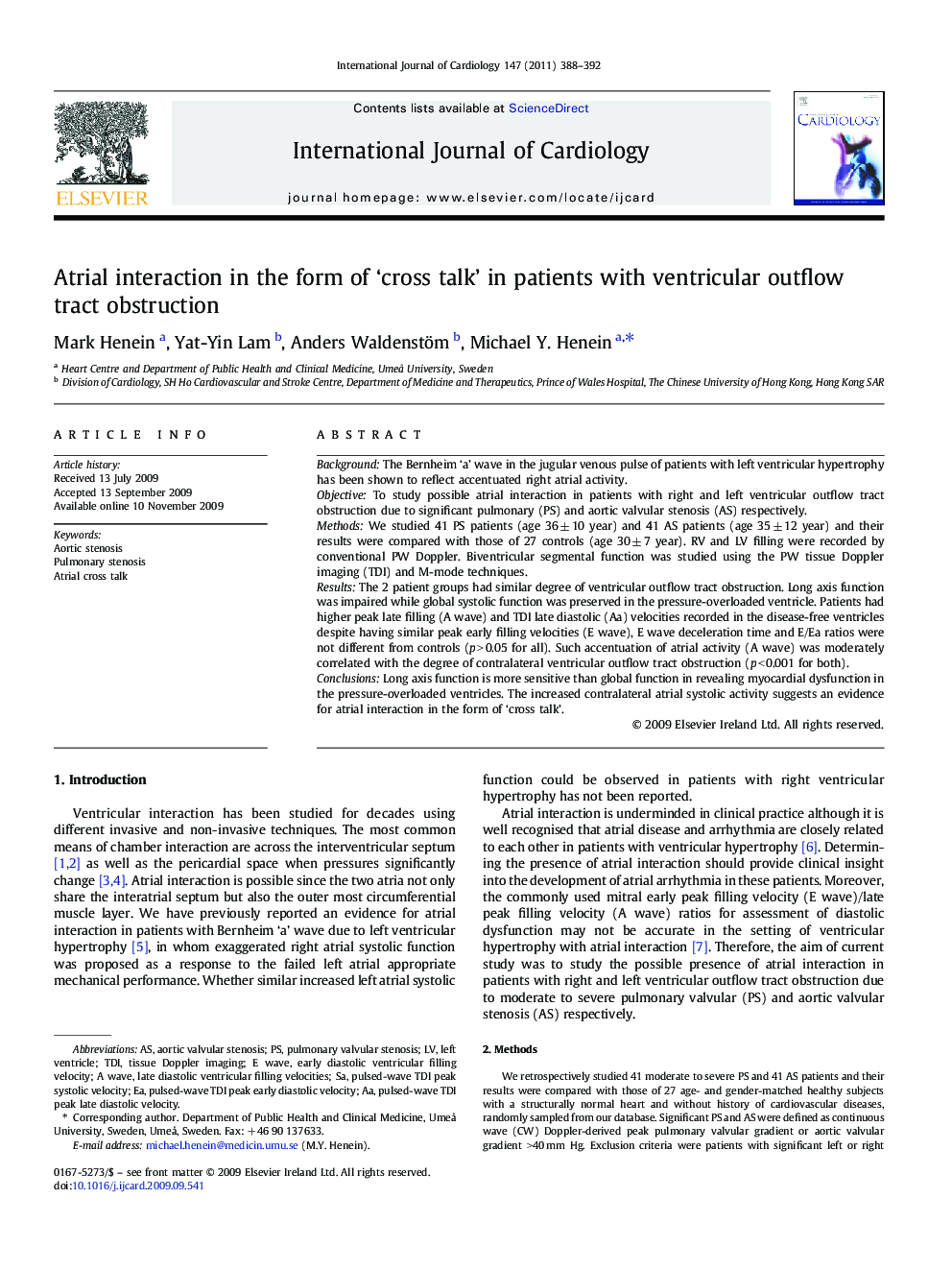| Article ID | Journal | Published Year | Pages | File Type |
|---|---|---|---|---|
| 2931353 | International Journal of Cardiology | 2011 | 5 Pages |
BackgroundThe Bernheim ‘a’ wave in the jugular venous pulse of patients with left ventricular hypertrophy has been shown to reflect accentuated right atrial activity.ObjectiveTo study possible atrial interaction in patients with right and left ventricular outflow tract obstruction due to significant pulmonary (PS) and aortic valvular stenosis (AS) respectively.MethodsWe studied 41 PS patients (age 36 ± 10 year) and 41 AS patients (age 35 ± 12 year) and their results were compared with those of 27 controls (age 30 ± 7 year). RV and LV filling were recorded by conventional PW Doppler. Biventricular segmental function was studied using the PW tissue Doppler imaging (TDI) and M-mode techniques.ResultsThe 2 patient groups had similar degree of ventricular outflow tract obstruction. Long axis function was impaired while global systolic function was preserved in the pressure-overloaded ventricle. Patients had higher peak late filling (A wave) and TDI late diastolic (Aa) velocities recorded in the disease-free ventricles despite having similar peak early filling velocities (E wave), E wave deceleration time and E/Ea ratios were not different from controls (p > 0.05 for all). Such accentuation of atrial activity (A wave) was moderately correlated with the degree of contralateral ventricular outflow tract obstruction (p < 0.001 for both).ConclusionsLong axis function is more sensitive than global function in revealing myocardial dysfunction in the pressure-overloaded ventricles. The increased contralateral atrial systolic activity suggests an evidence for atrial interaction in the form of ‘cross talk’.
